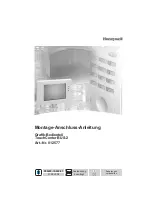
13
Model: TX-203,TX-204,TX-228; Article No. 5021,5023,5040; 10/2022
section adapted to the amperage (preferably 1.5mm² or 4mm²).
Fasten the connection cables to the mounting rail using UV-stable cable ties in such
a way that the cables are protected from rain and sun and, in particular, the plug
connections cannot lie in a puddle of water. To connect the micro inverter and the
connection cable, the pre-assembled AC plug-in system in combination with an AC
cable and assembled Betteri IP68 connection socket or the AC string input/output can
be used, depending on the delivery variant. To mount a Wieland connector, the pre-
assembled Betteri IP68 connector system must be removed.
Note:
Other plug connections / systems may be possible, provided they are suitable
for outdoor use and the current levels involved.
First commissioning
After mechanical and electrical installation of the solar power system, you can put the
system into operation. There should be enough sunshine for this. The solar panels
need to produce at least a start voltage of 22V.
Initial state:
1. The micro inverter is connected to the solar panels
2. The microinverter is connected to the house mains via Wieland
plug(recommended) or Schuko plug.
3. The cables are fixed protected from rain and sunlight
4. The feed line is connected to the mains via a circuit breaker
Proceed as follows:
1. Turn on the circuit breaker and any other switches that may be present.
2. Switch on the main AC switch.
3. The unit LED should begin flashing green after you turn on the AC circuit breaker.
See chapter LED status for more information.
4. The micro inverter starts feeding (grid synchronization) within 2 minutes if there is
sufficient solar radiation. The status LED indicates the basic function. You can check
the feed-in power with a suitable power socket energy meter* (*needs to be water
proof for outside use!).
5. If you have installed a feed-in meter, you can also use it to check the current feed-
in power or energy.
Note:
When AC power is applied but the micro inverter is not started, approximately
0.2W of power can be measured for each micro inverter using a power meter. This
power is reactive power, not consumption from the utility grid.






































